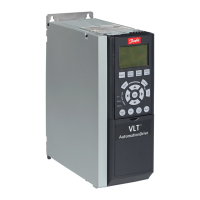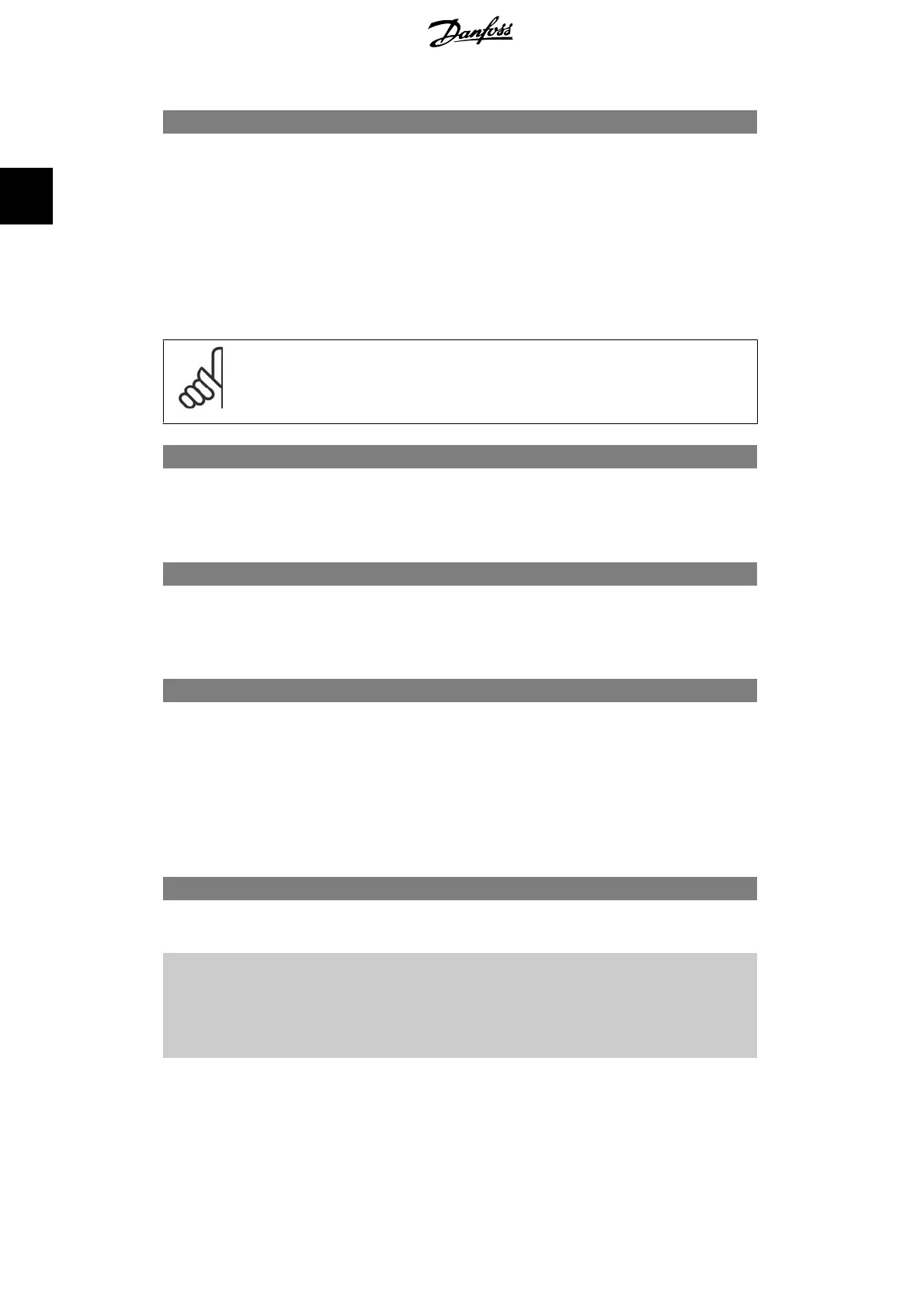2-01 DC Brake Current
Range: Function:
50%
*
[0 - 1000 %] Enter a value for current as a percentage of the rated motor
current I
M,N
, see par. 1-24
Motor Current
. 100% DC braking
current corresponds to I
M,N
.
DC brake current is applied on a stop command, when the speed
is lower than the limit set in par. 2-03
DC Brake Cut In Speed
;
when the DC Brake Inverse function is active; or via the serial
communication port. The braking current is active during the
time period set in par. 2-02
DC Braking Time
.
NB!
The maximum value depends on the rated motor current.
NB!
Avoid 100 % current for too long. It may damage the motor.
2-02 DC Braking Time
Range: Function:
10.0s.
*
[0.0 - 60.0 s.] Set the duration of the DC braking current set in par. 2-01, once
activated.
2-03 DC Brake Cut In Speed [RPM]
Range: Function:
0 RPM
*
[0 - par. 4 -13] Set the DC brake cut-in speed for activation of the DC braking
current set in par. 2-01, upon a stop command.
2-04 DC Brake Cut In Speed [Hz]
Option: Function:
[0 RPM]
*
0 - par. 4 -14 Set the DC brake cut-in speed for activation of the DC braking
current set in par. 2-01, upon a stop command.
2.5.3. 2-1* Brake Energy Funct.
Parameter group for selecting dynamic braking parameters.
2-10 Brake Function
Option: Function:
[0] Off No brake resistor is installed.
[1] Resistor brake A brake resistor is incorporated in the system, for dissipation of
surplus brake energy as heat. Connecting a brake resistor allows
a higher DC link voltage during braking (generating operation).
The Resistor brake function is only active in frequency convert-
ers with an integral dynamic brake.
[2] AC brake
2. How to Programme FC 300 Programming Guide
64
MG.33.M2.02 - VLT
®
is a registered Danfoss trademark
2

